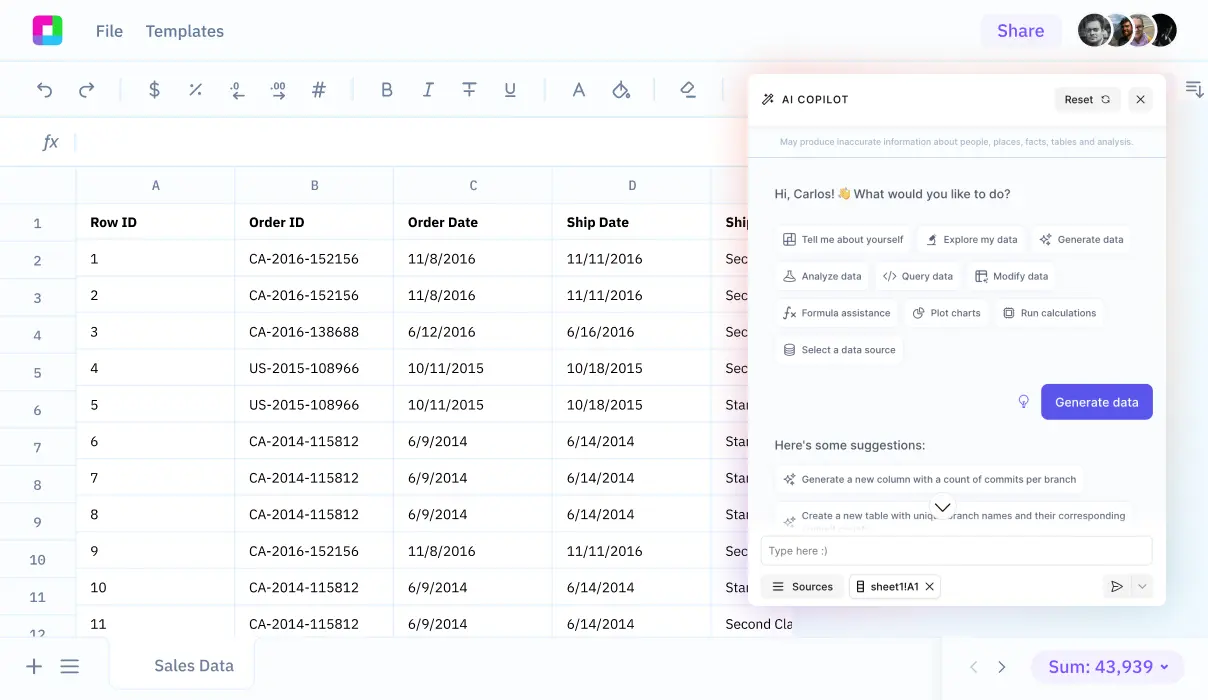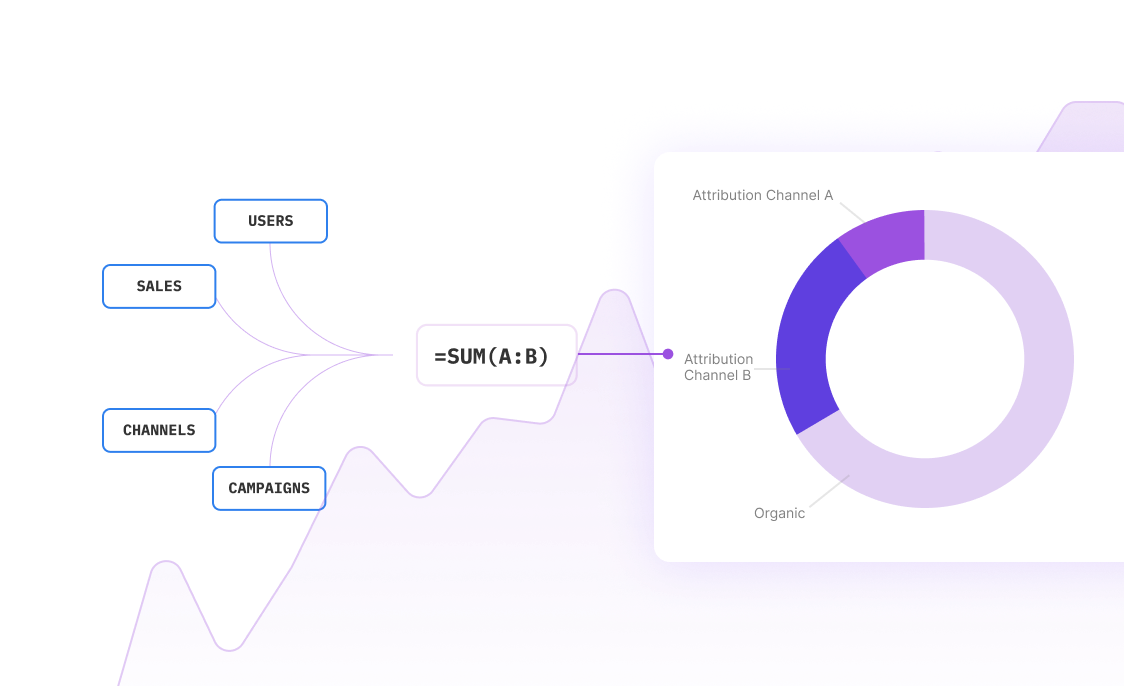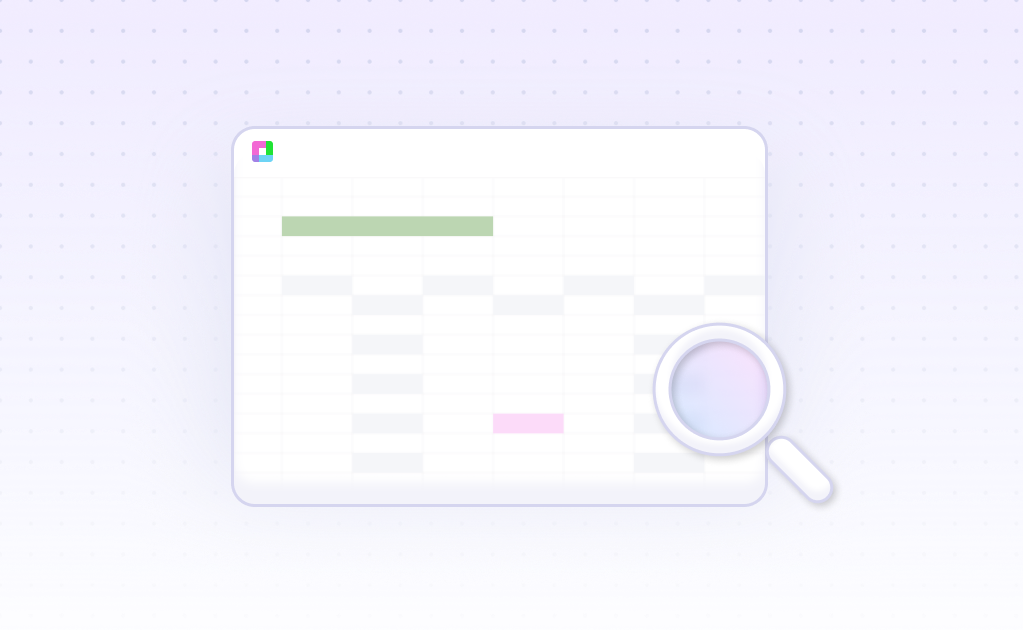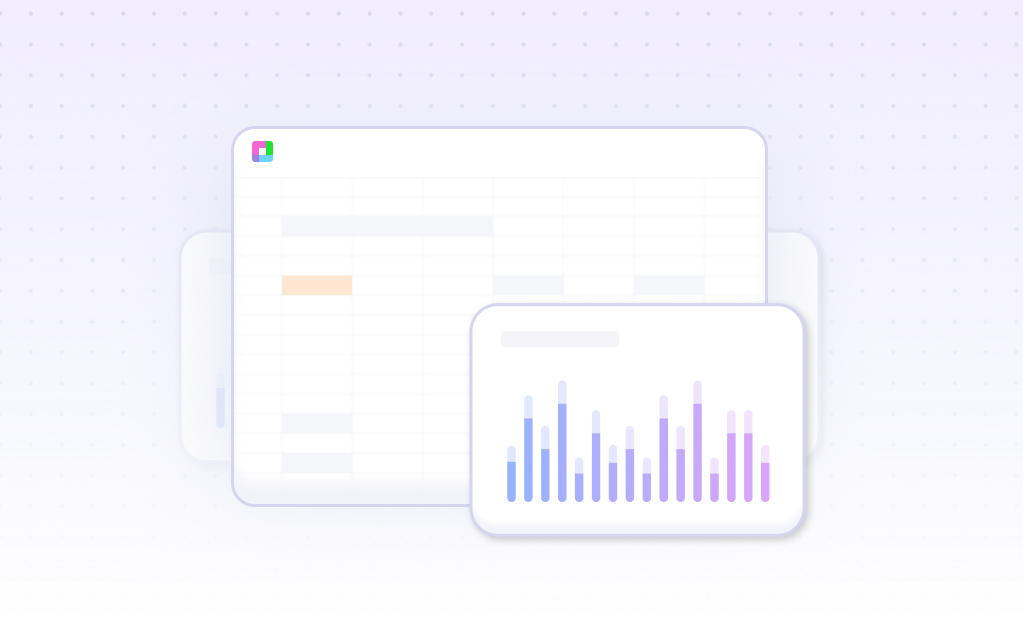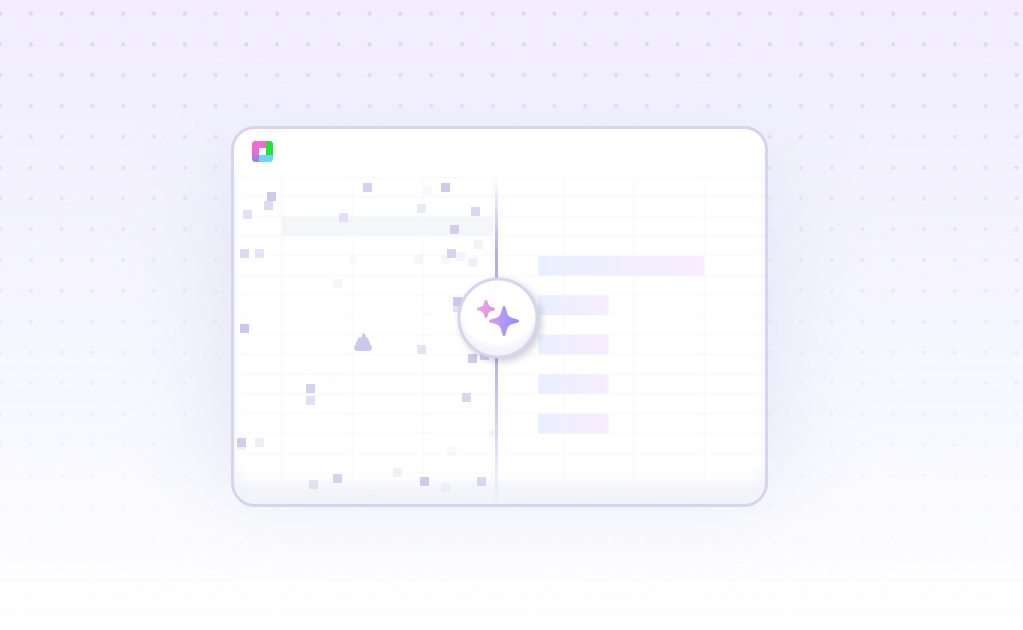
Introduction
Excel stands as a powerful tool for financial statement analysis, offering precise calculations and data organization capabilities. It excels at managing large volumes of financial data while providing automated calculations and visualization options. For socioeconomic analysis, organizations like Headwaters Economics offer specialized tools that create customized maps and reports.
Sourcetable emerges as an AI-powered alternative that combines spreadsheet functionality with artificial intelligence. This platform automates formula generation, data cleaning, and chart creation without requiring Excel expertise. It integrates with SQL and Python for advanced analysis while connecting to over 100 platforms and databases.
Discover how to leverage Sourcetable for financial and socioeconomic analysis at sourcetable.com/signup.
Why Sourcetable Is Superior for Financial Analysis
Sourcetable combines spreadsheet functionality with AI-powered analytics to deliver superior financial and socioeconomic analysis. Unlike traditional Excel workflows, Sourcetable's natural language processing capabilities extract insights and uncover patterns from complex datasets with minimal manual effort.
Key Advantages Over Excel
While both platforms offer calculators, charting, and multi-user collaboration, Sourcetable provides comprehensive audit trails and free access to advanced analytics features. Excel-like Tables for Confluence charges $0.25 per user monthly for similar capabilities.
Enhanced Accuracy and Efficiency
Sourcetable's AI automation reduces human error in data entry and calculations. The platform's natural language processing enables sophisticated analysis across healthcare, finance, marketing, and customer service applications without complex formula syntax.
Advanced Analytics Capabilities
Sourcetable leverages NLP for sentiment analysis, entity recognition, and text summarization. These features transform raw data into actionable insights through automated visualization and reporting tools, streamlining the analytical workflow.
Financial Analysis Benefits: Excel vs. AI-Powered Sourcetable
Why Financial Analysis Matters
Financial statement analysis provides critical insights into business health, enabling leaders to evaluate performance, uncover competitive advantages, and identify growth potential. It reveals vital information about profitability, efficiency, liquidity, valuation, and debt while facilitating comparisons across fiscal periods and peer companies.
Key Benefits of Financial Analysis
Comprehensive financial analysis helps managers optimize operations, supports investor decision-making, and determines business creditworthiness. It monitors progress against goals, identifies opportunities and risks, and improves operating efficiency for sustained competitive advantage.
Excel vs. Sourcetable for Financial Analysis
Traditional Excel analysis relies on structured source data tables and pivot tables for data presentation. Sourcetable, an AI-powered alternative, enhances this process by improving efficiency, saving time, and enabling analysis of larger datasets faster while reducing manual errors.
AI-Powered Advantages
Sourcetable's AI capabilities transform financial analysis through natural language processing, streamlined visualization, and automated reporting. This modern approach delivers improved accuracy and reliability in data analysis while maintaining the familiar spreadsheet workflow.
Types of Financial & Socioeconomic Analysis with Sourcetable
Statistical Analysis Tools
Sourcetable offers comprehensive statistical analysis capabilities including ANOVA for variance analysis, correlation coefficient calculations, and covariance analysis between measurement variables. Advanced tools include descriptive statistics for univariate analysis, F-tests for comparing population variances, and Fourier analysis for solving linear systems problems.
Forecasting and Trend Analysis
The platform provides exponential smoothing for predicting values based on prior periods and moving averages to project future values using preceding period averages. Random number generation enables statistical modeling, while regression analysis uses least squares methodology for trend forecasting.
Financial Analysis Applications
Users can perform essential financial analyses including personal expense tracking, budget planning, and small business financial management. The platform supports histogram creation for frequency analysis and rank-and-percentile calculations for data set evaluation.
Advanced Statistical Testing
Sourcetable includes multiple t-test variations for population mean analysis and z-tests for comparing two population means with known variances. These tools support both one-sided and two-sided alternative hypothesis testing, enabling thorough statistical validation of financial analyses.
Financial and Socioeconomic Analysis Use Cases with Sourcetable
Health Disparity Cost Analysis |
Analyze the economic impact of health disparities between First Nations people and non-Indigenous Australians. Quantify healthcare costs and social burden using evidence-based data. |
Geographic Socioeconomic Analysis |
Evaluate the relationship between socioeconomic disadvantage and remoteness. Compare outcomes across major cities, remote areas, and very remote areas to inform resource allocation decisions. |
Healthcare Policy Impact Assessment |
Assess the effectiveness of universal healthcare coverage on reducing health disparities. Calculate cost-benefit ratios of healthcare interventions across different socioeconomic groups. |
Cultural Determinants Analysis |
Measure the impact of self-determination initiatives and cultural factors on First Nations health outcomes. Compare these against traditional socioeconomic indicators like education and income. |
Disease Burden Economic Analysis |
Quantify the economic burden of disease by socioeconomic area. Calculate healthcare costs, productivity losses, and social impact across different regions and populations. |
Frequently Asked Questions
How does Sourcetable's AI help with financial analysis?
Sourcetable's AI uses natural language processing to automate data analysis tasks, detect patterns automatically, create visualizations through conversational prompts, and generate reports based on the analysis. The AI provides real-time updates and can perform benefit analysis through natural language interactions.
What are the key benefits of using AI-powered tools for financial analysis?
By using AI-powered analysis tools, you can perform faster analysis of financial data, analyze historical data to improve forecasting, enable collaboration across teams, and unlock actionable insights for smarter decision-making.
How do I get started with Sourcetable for financial analysis?
You'll need to use a modern web browser as older browsers like Internet Explorer are not supported. Sourcetable's interface allows you to analyze data by conversing with the AI through natural language prompts.
Conclusion
Excel remains a powerful tool for financial and socioeconomic analysis, offering data management, visualization, and collaboration features. Excel's flexibility and accuracy make it ideal for analyzing large volumes of financial data.
Sourcetable provides an AI-powered alternative that automates many Excel tasks. It generates formulas like SUM and VLOOKUP, creates charts, and cleans data automatically. With SQL and Python integration, Sourcetable enables advanced analysis without requiring spreadsheet expertise.
Whether you choose Excel or Sourcetable depends on your needs. Excel suits users comfortable with manual spreadsheet work, while Sourcetable's AI automation and voice controls offer a more accessible approach. Try Sourcetable's financial analysis capabilities at sourcetable.com/signup.
Recommended Analysis Guides
Connect your most-used data sources and tools to Sourcetable for seamless analysis.
Frequently Asked Questions
If you question is not covered here, you can contact our team.
Contact Us
